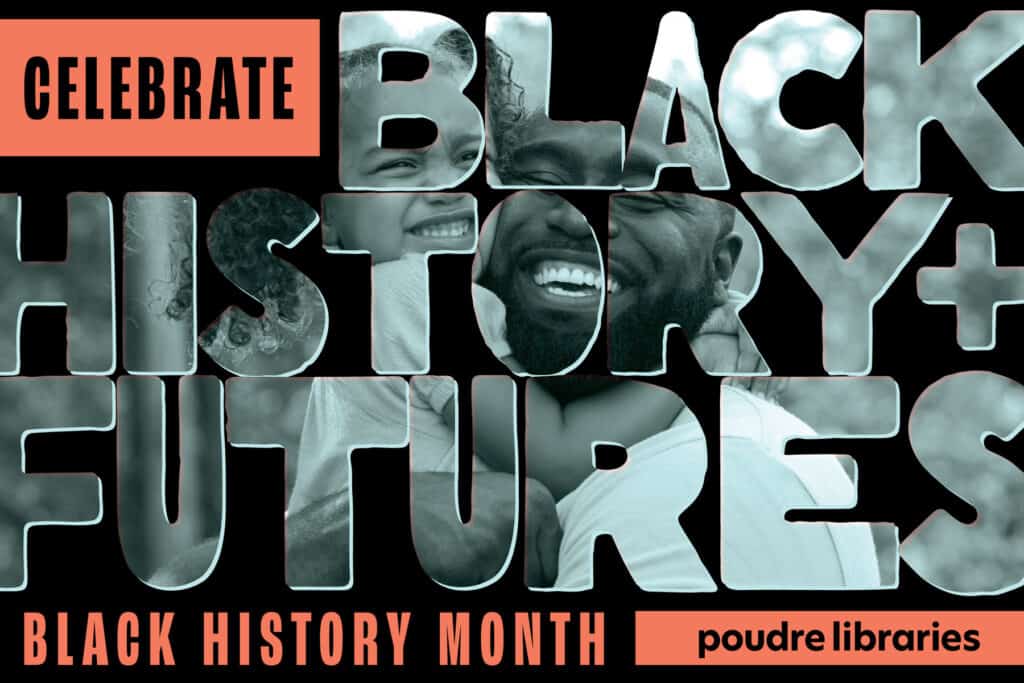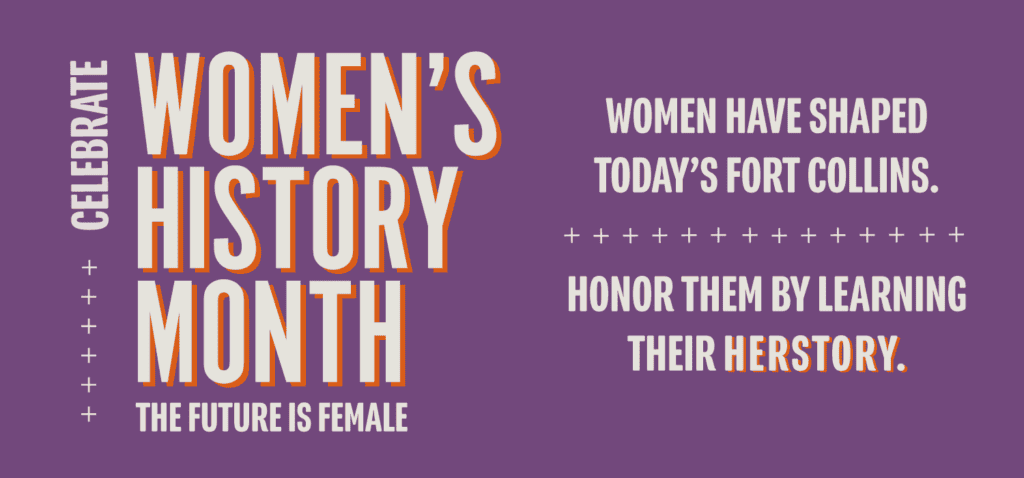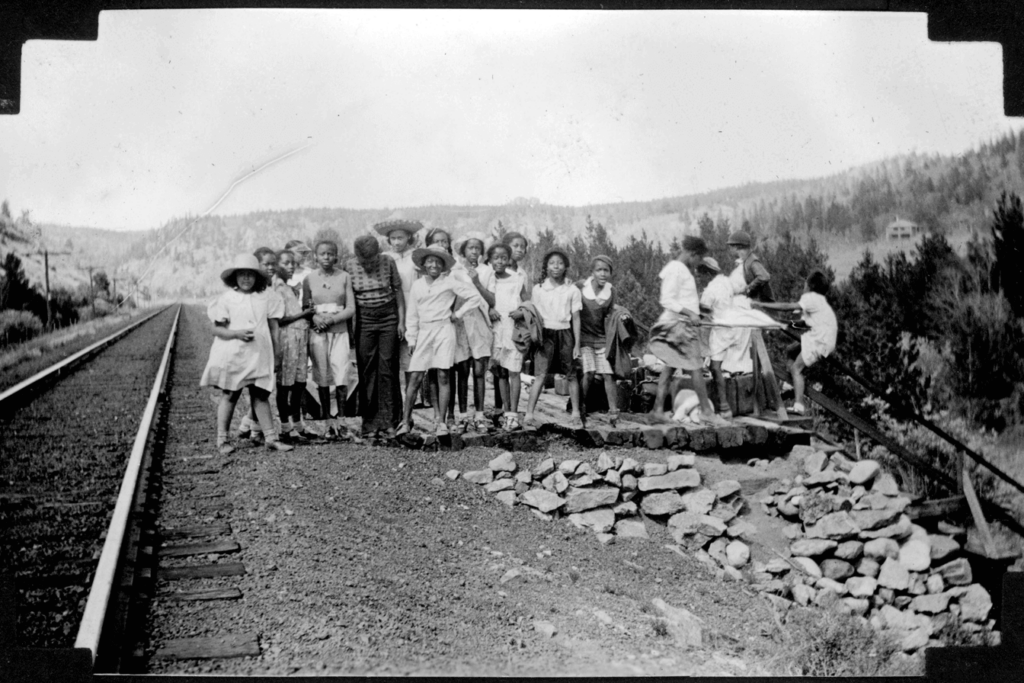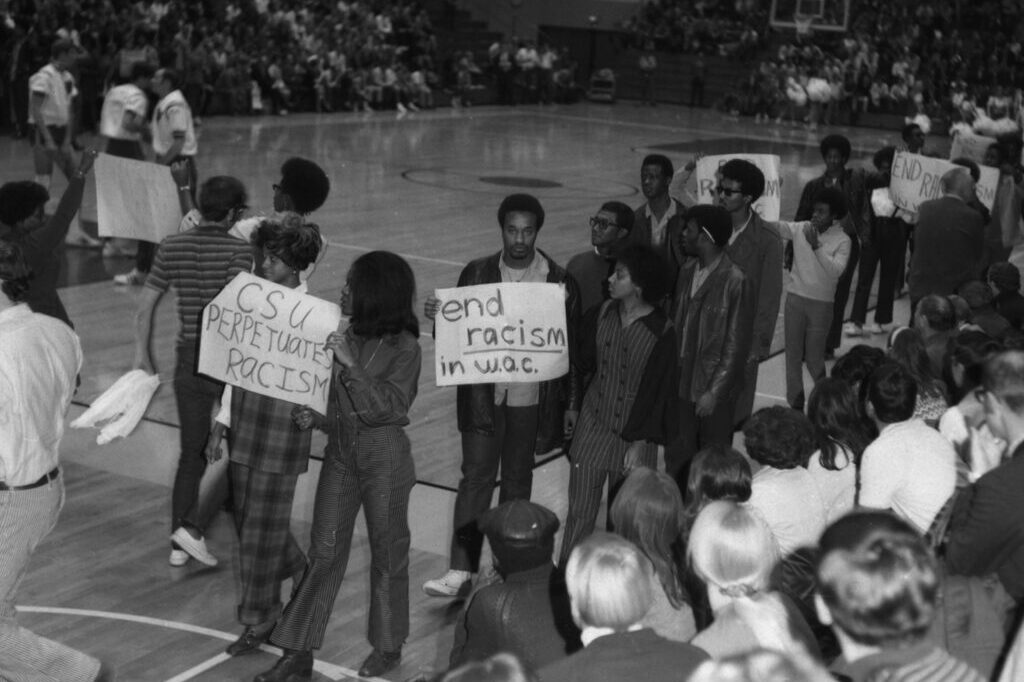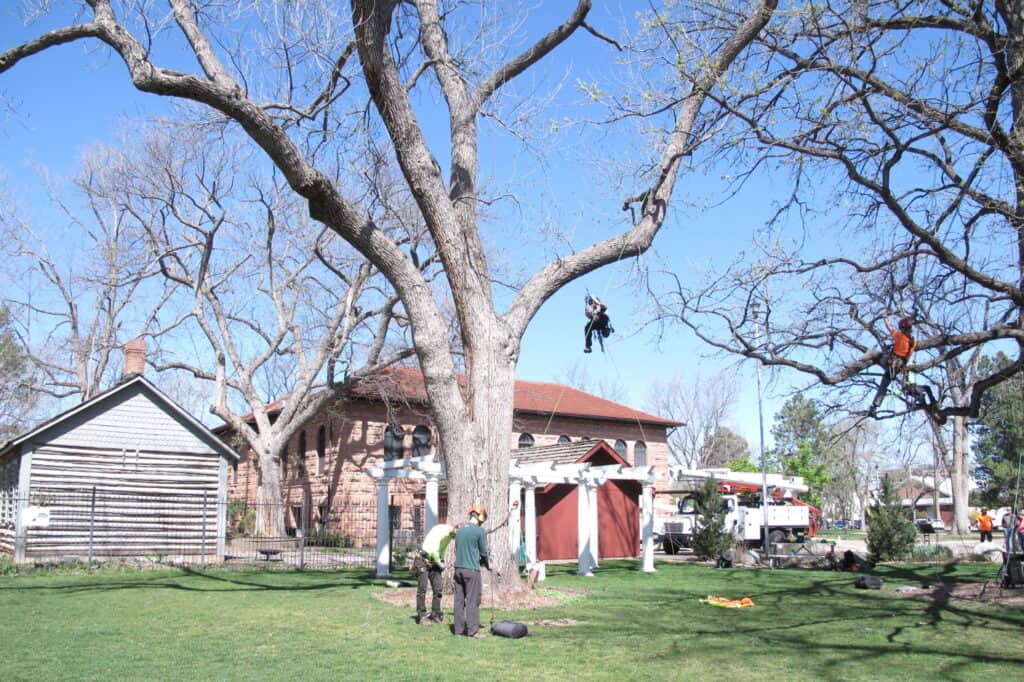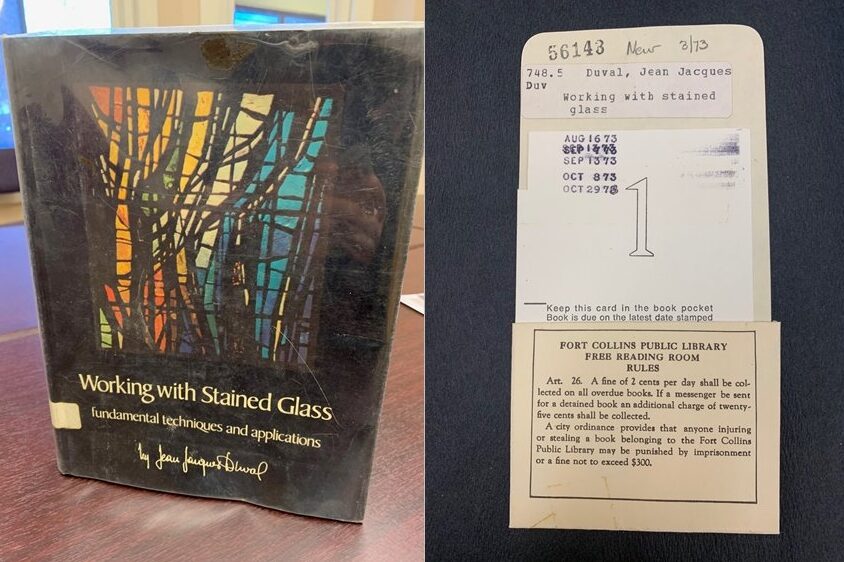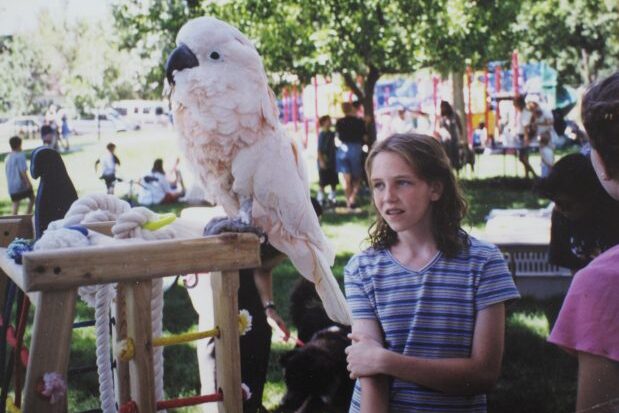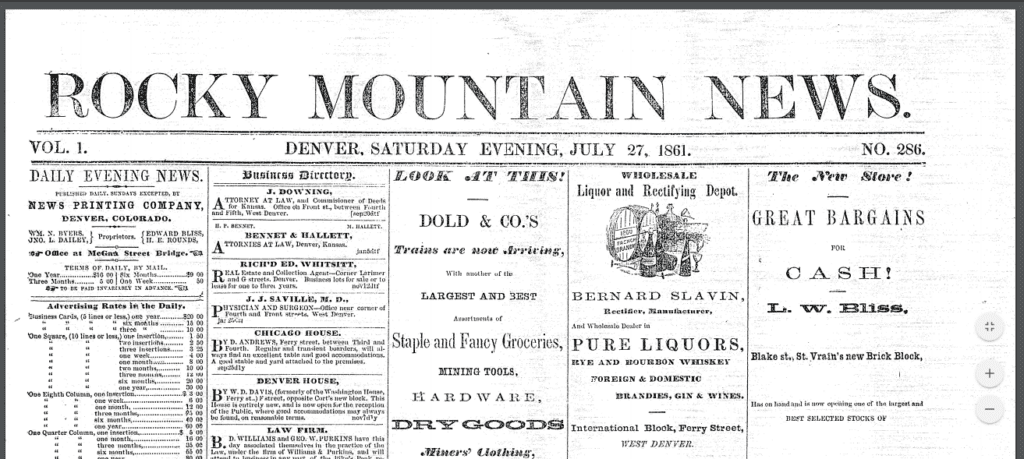By Annaclaire Crumpton
Women have shaped the Fort Collins we know today. This month, enjoy some book recommendations that accompany profiles on remarkable women in Northern Colorado history.
Our exciting mix of choices ranges from literature these women wrote themselves, to films and movies that align with the women’s life’s work. All historical photographs are sourced from Fort Collins History Connection, a collaboration between Fort Collins Museum of Discovery and Poudre Libraries.

Elfreda Stebbins
Over a century ago, Fort Collin’s very first Librarian, Elfreda Stebbins built a foundation upon which our district relies today. After graduating high school in Nebraska, Elfreda taught high school for two years before visiting a cousin who worked as a librarian in Cleveland, Ohio.
This trip would shape the rest of Elfreda’s life – she went on to attend Library school, and after graduating at age 26, she landed a job as the first City Librarian in Fort Collins at the newly opened Carnegie Library. At this time, the Library had a circulating collection of 2,700 books! Our collection today surpasses over 1 million items!
She served as the City’s Librarian from 1903 to 1931. During these three decades, she provided boundless enrichment to the Fort Collins community. After she passed away suddenly in 1931, the Colorado Association of Libraries honored her life and boundless energy stating, “her influence towards purposeful reading in [the] city was so great that she was named ‘the most important woman citizen Fort Collins ever had.'”
One of her reading suggestions during her tenure was So Big by Edna Ferber.

Elizabeth "Auntie" Stone
Meet one of the founding figures of Fort Collins often called its “Founding Mother” – Elizabeth “Auntie” Stone. Born in 1801, Stone’s early years were spent as a pioneer moving across the west. She eventually found her way to Fort Collins in 1860 at age 63 to run an officer’s mess hall with her second husband, Judge Stone.
Her husband passed away just six years after the couple arrived in Fort Collins. At this time, Auntie Stone assumed ownership of the mess hall and made it into a public hotel.
Eventually, her house evolved into the city’s first hospital and school. Stone was integral to the formation of Fort Collins as we know it today and was responsible for starting the city’s first mill and brick kiln.
She was also a fierce supporter of women’s suffrage and voted for the first time at the age of 93 in a municipal election saying, “I have waited a lifetime for this privilege.” She would pass away just a year later – every business in town halted operations and the town bell rang 94 times to honor each year of her long and accomplished life.
You can visit Auntie Stone’s Cabin in Library Park where it sits today. To engage younger minds in the fantastic life of Elizabeth Stone, we recommend The Saga of Auntie Stone and her Cabin by Noley Mumie.
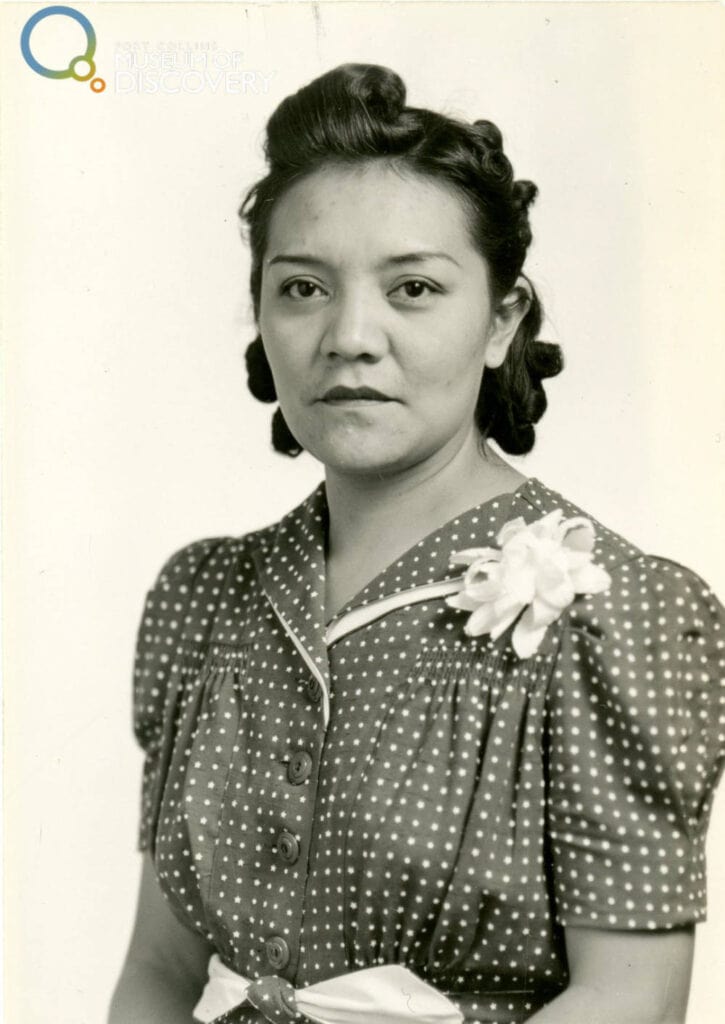
Jovita Vallencillo Lobato
One of Jovita Vallecillo Lobato’s personal philosophies was “Tie your wagon to a star. Otherwise, you might not get anywhere.” Jovita Vallencillo Lobato was born in Fort Collins in 1908 – her parents were sugar beet farmers and encouraged both of their children to attend public school and college.
Jovita is the first known Mexican-American to graduate from public school in Fort Collins (in 1932) and became the first Mexican-American student to graduate from CSU (in 1936) with degrees in economics and sociology. Undeterred by societal barriers, Jovita would go on to earn a master’s degree in psychology and teach in schools in Colorado, New Mexico, and New Jersey.
Sixty years after she graduated, she and her brother Salvador were honored at the CSU El Centro Achievement Awards. Over 1,000 Hispanic and Latinx students were enrolled at CSU that year, following in Jovita footsteps.
In honor of Jovita’s fields of study, we recommend Freakonomics by Steven D. Levitt & Stephen J. Dubner.

Charlene Tresner
Today, the Fort Collins History Connection provides a vital window into the past, including the stories from this piece and those we collected for Black History Month. The beginning of these archives is often accredited to the work of a woman named Charlene Tresner.
Born just outside of Fort Collins on a farm in 1918, Charlene attended school in Fort Collins through college at CSU. She later married and spent 20 years in Tulsa, Oklahoma teaching and raising her family before returning to Fort Collins.
After hearing of library efforts to archive history, Charlene secured grant funding to create a rich historical archive full of dozens of audio interviews. Charlene collected tens of thousands of photographs, storing them under her own bed until the archive room at the Library was ready. Thanks to Charlene’s work, we can honor important historical figures and events that made Fort Collins what it is today. Charlene wrote the book, The Streets of Fort Collins.

Margaret Martinez
Community builder, leader, and mother could all be words used to describe Margaret Martinez. Margaret was born in 1910 in New Mexico and would move to Northern Colorado when she was very young. She attended various Fort Collins schools and met her husband Charles Martinez in the Northern Colorado area. They married in 1927.
Margaret and Charles worked for the Great Western Sugar Company farming sugar beets for a decade across the state before they purchased their home from the company in 1937 in the Alta Vista neighborhood. Margaret and Charles took great pride in maintaining their home where they raised a large family.
The Martinez family would face the realities of their environment, the labor required to make a living, the discrimination towards Mexican-Americans in Fort Collins in the 1900s, and all the while, built a community with incredible longevity while doing it. Long after the purchase of their home, their street, known formerly as “B Street,” was renamed “Martinez Street” in honor of Charles.
We suggest the film Los Betabeloros which honors Hispanic and Lantix beet workers in the United States like Margaret.

Sarah Ellis Eddy
It takes great courage to go against the grain of society, especially as a woman. Sarah Ellis Eddy was born in 1831 in New York, and 50 years later found her way to Greeley, Colorado to teach. Sarah often wore men’s clothing and an uncharacteristically short haircut for women in the late 1800s.
After teaching, Sarah purchased a book store downtown and amassed a fortune. She later sold her store and became involved in politics, serving as a delegate for a Fort Collins primary.
She died in 1921. Throughout her life, she broke barriers and built communities. Drawing on legacies of female business owners like Sarah, we recommend “Women in Business,” a show that explores stories of exceptional businesswomen. (Kanopy)

Agnes Wright Spring
Agnes Wright Spring is the only person in history (man or woman) to serve as the State Historian of two states – Colorado and Wyoming. Born in 1894, Agnes was a passionate writer, journalist, historian, and expert of Western history. Agnes was the first woman to graduate from the University of Wyoming with a degree in civil engineering. Despite her excellent grades, she was told there was little room for women in the field and later accepted a job as Assistant State Librarian in the Supreme Court Library in Cheyenne.
She married Archer T. Spring in 1921. The couple arrived in Fort Collins in 1922 and purchased a cherry orchard which unfortunately failed due to rough environmental conditions and the Great Depression. Wright served in many different positions through her life including Wyoming State Librarian, president of the Colorado Historical Society, and Colorado State Historian from 1954-1963. Agnes wrote over 20 books and 500 articles on the history of the West.
She took part in many Fort Collins community organizations and was awarded dozens of awards throughout her life. Agnes also took part in canvassing for women’s suffrage often finding people resistant to women at the ballot box even being told “I hope you never get the vote.”
We recommend Cavalry & Coaches : The Story of Camp and Fort Collins with the introduction written by Agnes Spring.

Dr. Nora Rice Miller
Dr. Nora Rice Miller came to Fort Collins in 1893 and taught 6th and 7th grade at the Franklin School. Shortly after coming to Fort Collins, she found herself widowed early in life with two children. Nora then decided to pursue her degree in medicine, eventually graduating from CU School of Medicine before the age of 35.
She began her practice in 1908 in Fort Collins and often traveled long distances via a horse-drawn buggy to care for her patients. It was exceedingly rare for a woman in this time to pursue medicine, making her one of the pioneers of women in the medical field.
Eventually, she moved to Baca County in Southern Colorado where she found more success in her practice which could be attributed to her being the only physician in the area. She would later move to Texas to practice and eventually took up her old profession of teaching during WWII in Montana to try and address the shortage of teachers.
To read up on women in medicine, dive into Bold Women of Medicine: 21 Stories of Astounding Discoveries, Daring Surgeries, and Healing Breakthroughs by Susan M. Latta.

Colonel Althea B. Williams
Another powerhouse woman from Fort Collins is Colonel Althea B. Williams. Althea’s family moved to Fort Collins in 1932 when she was 12. She attended school in the city and eventually received her degree from Beth-el College of Nursing in Colorado Springs.
Her first nursing job was at Larimer County Hospital. When Pearl Harbor occurred, she enlisted as an Army nurse. She served at four different stations in the Pacific during WWII and would return to Fort Collins after her deployment to pursue degrees in Home Economics and Occupational Therapy at CSU before reenlisting.
After rejoining the army, she went on to serve in the Korean War and the Vietnam War at which point she was promoted to Colonel and later, Chief Nurse. All the while, she saw combat medical treatment advance, noting the remarkable improvement over the course of three decades. In total, she served for 28 years and more than six deployments in the Army Nurse Corps.
When she retired in 1970, she was one of the highest-ranking women in the U.S. Army. She died in 2018 just before she turned 98 leaving behind a lifetime of compassionate service. In honor of her compassionate service, we suggest The Secret Rescue by Cate Lineberry which explores the care that nurses provided during WWII.

Dr. Temple Grandin
Beloved professor of Animal Science at CSU, Dr. Mary Temple Grandin is one of the most internationally recognizable women to live in Fort Collins. Her research in animal science ethics and cattle farming is world-renowned.
She is also one of the most prominent individuals in the world with Autism. She was one of the first adults in prominent public life to share she is autistic, which helped to break down the stigma and shame surrounding individuals with autism.
In 2010, she was named in Time Magazine as one of the most influential people in the world.
She has published over 60 peer-reviewed academic papers in the field of animal science and helped to develop a system for assessing animal welfare at slaughterhouses. She has been inducted into the Colorado and National Women’s Hall of Fame.
We recommend Spectrum, a PBS series that explores the sensory experience of individuals with autism. The series is guided by Dr. Temple Grandin – she draws on her own experiences while breaking down the connections of sensory experience in the brain for individuals with autism. (Kanopy) Dr. Grandin also wrote the book, Thinking in Pictures which explores her life living with autism.




